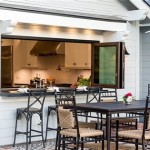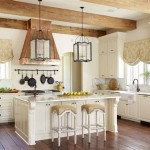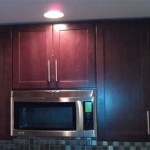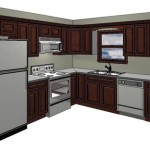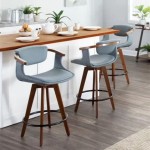Kitchen Luxury Vinyl Tile Flooring: A Practical and Stylish Choice
Kitchen flooring endures significant wear and tear. It needs to withstand spills, stains, dropped items, and constant foot traffic. Luxury Vinyl Tile (LVT) flooring has emerged as a popular choice for kitchens, offering a blend of durability, aesthetics, and affordability that addresses the unique demands of this high-traffic area. This article explores the key attributes of kitchen LVT flooring, highlighting its benefits and providing information essential for making an informed decision.
Durability and Resilience
One of the primary reasons LVT is favored for kitchens is its exceptional durability. Unlike traditional hardwood or tile, LVT is specifically engineered to withstand the rigors of a busy kitchen environment. Its multi-layered construction typically includes a wear layer, a design layer, and a backing layer. The wear layer is a transparent, protective coating that shields the flooring from scratches, scuffs, stains, and fading. This layer's thickness directly correlates with the flooring's overall resistance to wear. For high-traffic kitchens, a thicker wear layer is generally recommended.
The design layer is a high-resolution photographic image that replicates the appearance of natural materials such as hardwood, stone, or ceramic tile. Advanced printing technology allows for realistic textures and patterns, making it difficult to distinguish LVT from its natural counterparts. Below the design layer is the core, which provides structural stability and impact resistance. The backing layer adds cushioning and contributes to the flooring's overall resilience, making it comfortable underfoot.
LVT's resilience is particularly beneficial in kitchens where dropped items are common. Unlike brittle tiles that can crack or hardwood that can dent, LVT absorbs impact, minimizing the risk of damage to the flooring itself and potentially protecting dropped items from shattering. This inherent flexibility also contributes to a more comfortable standing surface, which is advantageous for individuals who spend extended periods in the kitchen.
Water Resistance and Ease of Maintenance
Kitchens are inherently wet environments. Splashes, spills, and potential leaks are commonplace. Water resistance is a critical factor to consider when selecting kitchen flooring, and LVT excels in this area. Most LVT products are completely waterproof, meaning they will not absorb water or be damaged by moisture exposure. This is a significant advantage over materials like hardwood, which can warp, swell, or develop mold in damp conditions.
The waterproof nature of LVT also simplifies cleaning and maintenance. Spills can be easily wiped up with a damp cloth or mop, preventing stains from setting in. Regular sweeping or vacuuming is sufficient to remove dirt and debris. Unlike grout lines in tile flooring, which can harbor bacteria and require specialized cleaning products, LVT's smooth, seamless surface is easy to sanitize. Harsh chemical cleaners are generally unnecessary, making LVT a low-maintenance and hygienic choice for the kitchen.
Some LVT products feature enhanced moisture-wicking properties, further reducing the risk of water damage. These products are specifically designed for areas prone to excessive moisture, such as bathrooms and basements, but can also provide added protection in kitchens. When selecting LVT for a kitchen, it is important to verify its water resistance rating and choose a product that is specifically designed for wet environments.
Style and Design Versatility
Beyond its practical benefits, LVT offers unparalleled design versatility, allowing homeowners to create a kitchen that reflects their personal style. LVT is available in a wide array of colors, patterns, and textures, mimicking the look of natural materials with remarkable accuracy. Whether a homeowner desires the warmth of hardwood, the elegance of marble, or the rustic charm of slate, LVT can deliver the desired aesthetic at a fraction of the cost and with superior performance.
LVT is manufactured in both tile and plank formats, offering further design flexibility. LVT tiles can be arranged in various patterns, such as checkerboard or herringbone, to create visual interest. LVT planks replicate the look of hardwood flooring, with varying widths and lengths available to mimic different wood species and installation styles. Some LVT planks feature embossed textures that further enhance the realism and add tactile appeal.
The design possibilities are further expanded by the option of custom installations. LVT can be easily cut and shaped to fit around cabinets, appliances, and other fixtures, creating a seamless and professional finish. Inlays and borders can be incorporated to add a personalized touch and define different areas within the kitchen. With the wide range of available options, LVT allows homeowners to create a kitchen floor that is both visually appealing and functionally superior.
Cost-Effectiveness and Installation
Compared to natural materials like hardwood, stone, and ceramic tile, LVT is a more cost-effective flooring option. The initial cost of LVT is generally lower, and the installation process is typically less labor-intensive, resulting in lower overall project costs. While the price of LVT can vary depending on the quality, thickness, and design, it consistently presents a more budget-friendly alternative without compromising on aesthetics or performance.
LVT can be installed using several methods, including glue-down, click-lock, and loose-lay. Glue-down installation involves adhering the LVT directly to the subfloor with a specialized adhesive. This method provides a secure and permanent bond, making it suitable for high-traffic areas. Click-lock installation is a floating floor system where the LVT planks or tiles interlock together, creating a seamless surface. This method is relatively easy to install and does not require adhesive, making it a popular choice for DIY projects.
Loose-lay LVT is designed to be installed without adhesive or interlocking mechanisms. It relies on its weight and friction to stay in place. This method is particularly suitable for areas where the flooring may need to be easily removed or replaced. Regardless of the installation method, proper subfloor preparation is crucial for ensuring a smooth and even surface. Any imperfections in the subfloor can telegraph through the LVT, affecting its appearance and performance.
While professional installation is recommended for optimal results, many homeowners choose to install LVT themselves to save on labor costs. Online tutorials and manufacturer instructions provide guidance on the installation process. With careful planning and attention to detail, DIY installation can be a viable option for experienced homeowners.
Underlayment Considerations
While some LVT products come with an attached underlayment, others may require a separate underlayment to be installed. An underlayment provides several benefits, including sound absorption, thermal insulation, and added cushioning. It can also help to smooth out minor imperfections in the subfloor and improve the overall comfort of the flooring.
The type of underlayment required will depend on the LVT product and the condition of the subfloor. For concrete subfloors, a moisture barrier underlayment is recommended to prevent moisture from seeping into the LVT. For wood subfloors, a foam or cork underlayment can provide added cushioning and sound absorption. When selecting an underlayment, it is important to consult the LVT manufacturer's recommendations to ensure compatibility and optimal performance.
Some LVT products feature a pre-attached underlayment that simplifies the installation process and eliminates the need for a separate underlayment. These products are typically more expensive but can save time and effort during installation. Whether or not to use a separate underlayment is a matter of personal preference and budget, but it is important to consider the potential benefits before making a decision.
Environmental Considerations
As environmental awareness grows, many homeowners are seeking sustainable flooring options. LVT offers several advantages in terms of environmental impact compared to some other flooring materials. Many LVT products are made from recycled materials, reducing the demand for virgin resources. LVT is also recyclable, meaning it can be repurposed at the end of its lifespan.
The manufacturing process for LVT is generally less energy-intensive than that of natural materials like stone and ceramic tile. LVT also has a longer lifespan than some other flooring options, reducing the need for frequent replacement. Some LVT products are certified by organizations such as FloorScore and GreenGuard, indicating that they meet stringent standards for indoor air quality and low VOC emissions. VOCs (volatile organic compounds) are chemicals that can be released into the air and potentially cause health problems.
When selecting LVT, it is important to look for products that are certified by reputable organizations and made from recycled materials. Proper disposal and recycling of LVT at the end of its lifespan can further minimize its environmental impact. By choosing LVT, homeowners can contribute to a more sustainable and environmentally responsible kitchen design.

What Is Lvt Luxury Vinyl Tile Right For A Kitchen And Bath

How To Choose Best Vinyl Flooring For Kitchen Scv Floorsmith
What Is The Best Flooring For A Kitchen Tarkett

Lvt Flooring Commercial Luxury Vinyl Tiles Floor City

Options For The Best Kitchen Flooring Lx Hausys

Luxury Vinyl Flooring Composition Guide Msi Surfaces

How To Choose Best Vinyl Flooring For Kitchen Scv Floorsmith

10 Luxury Vinyl Tile Kitchen Ideas Flooring Floor

Kitchen Lvt Flooring Harvey Maria

Vinyl Stone Flooring Guide Lx Hausys

